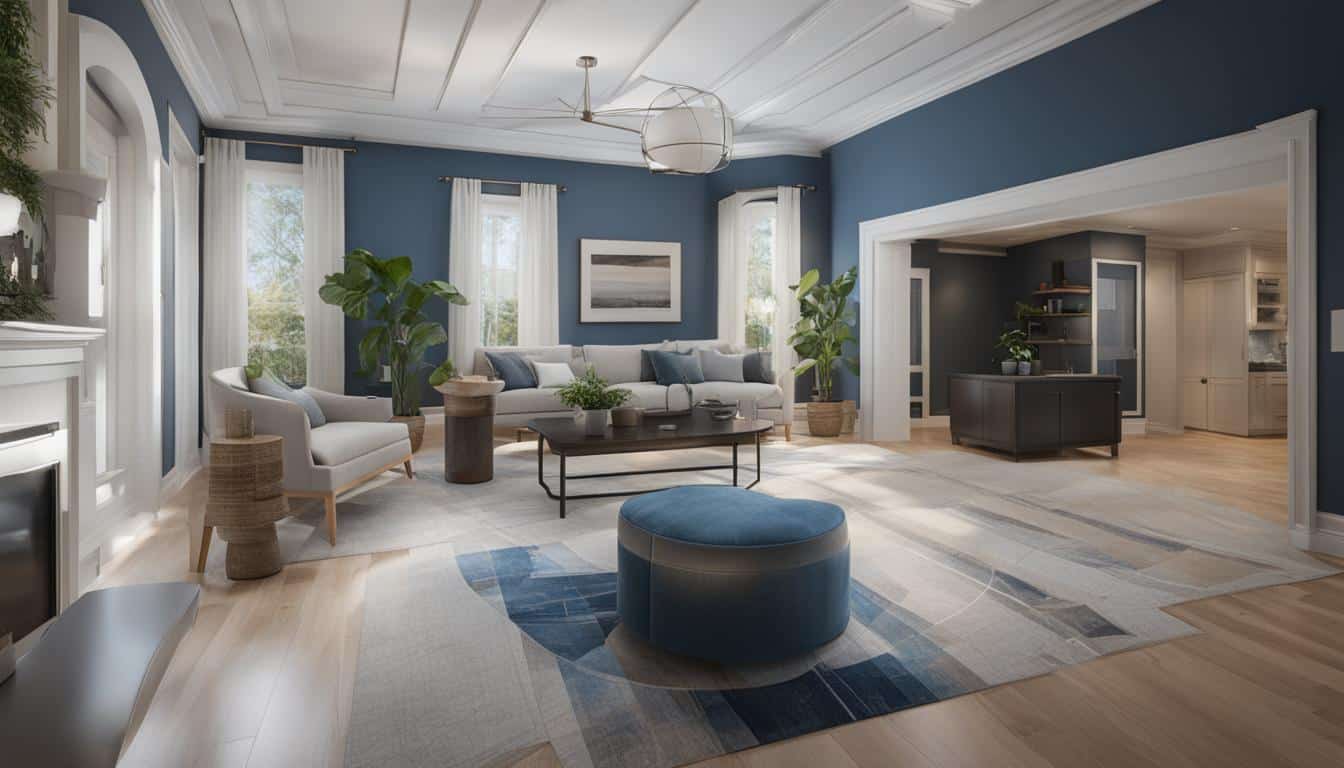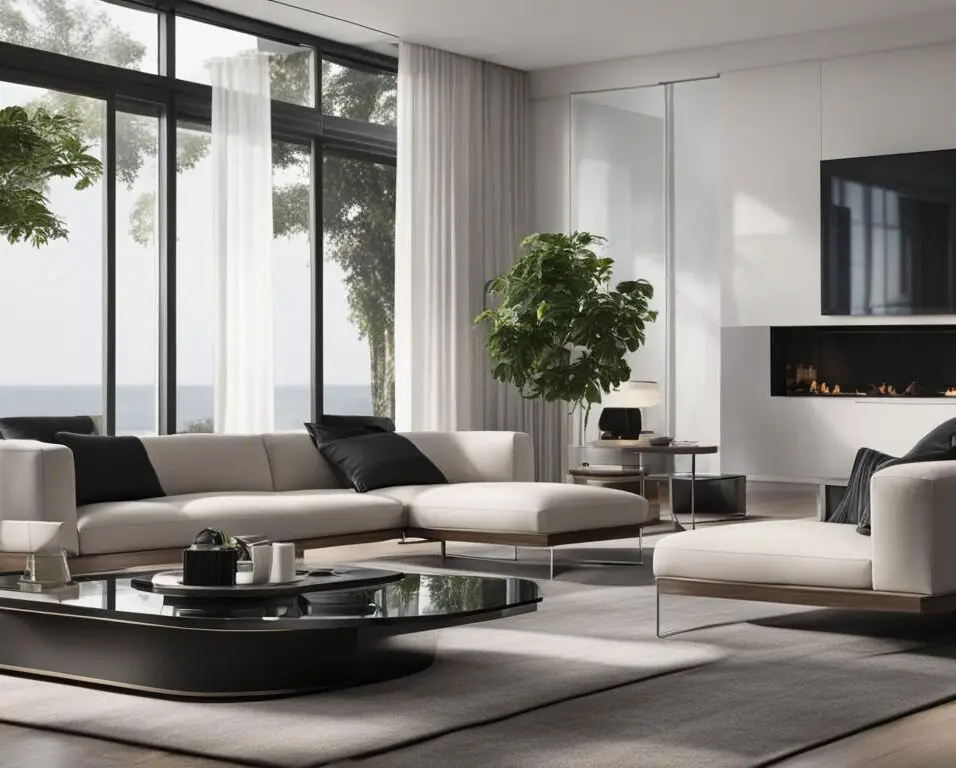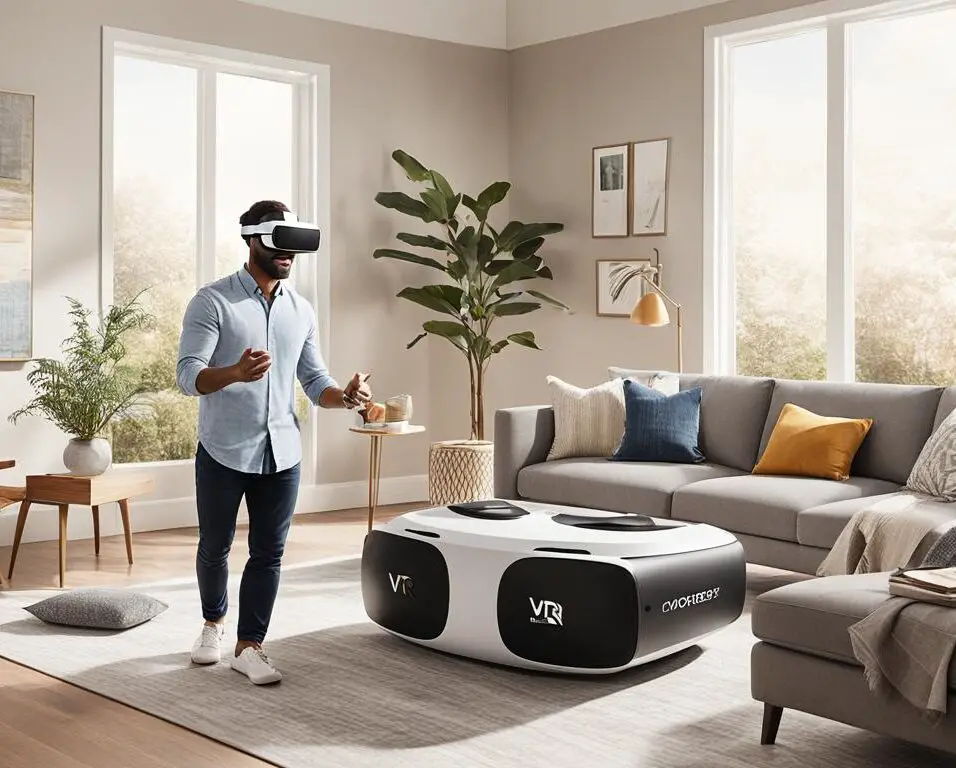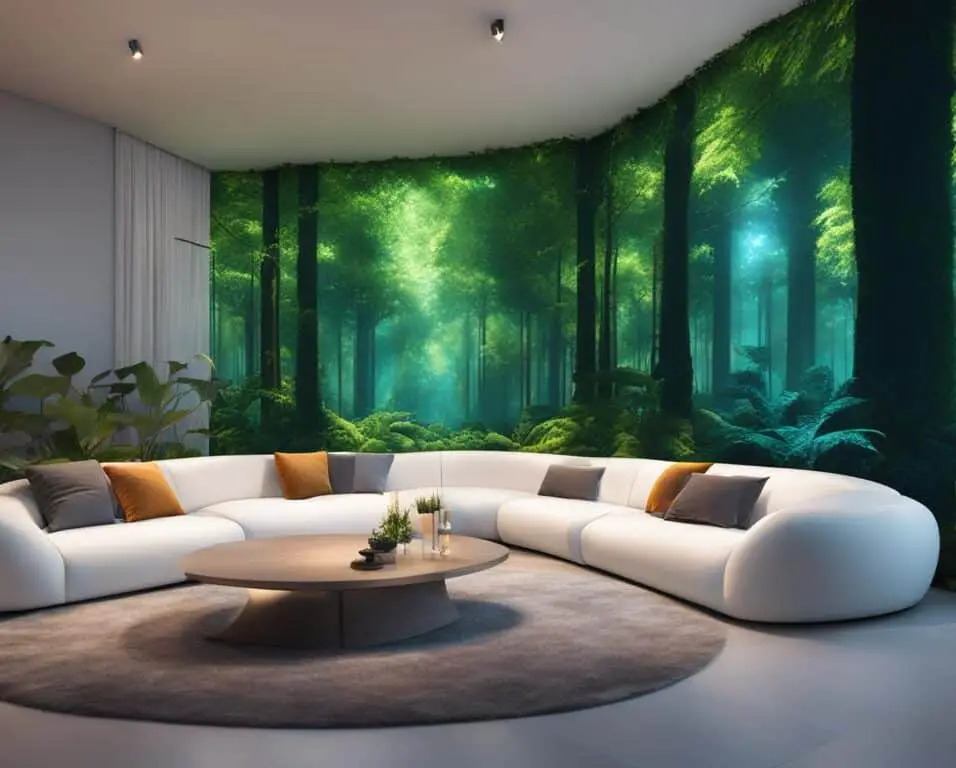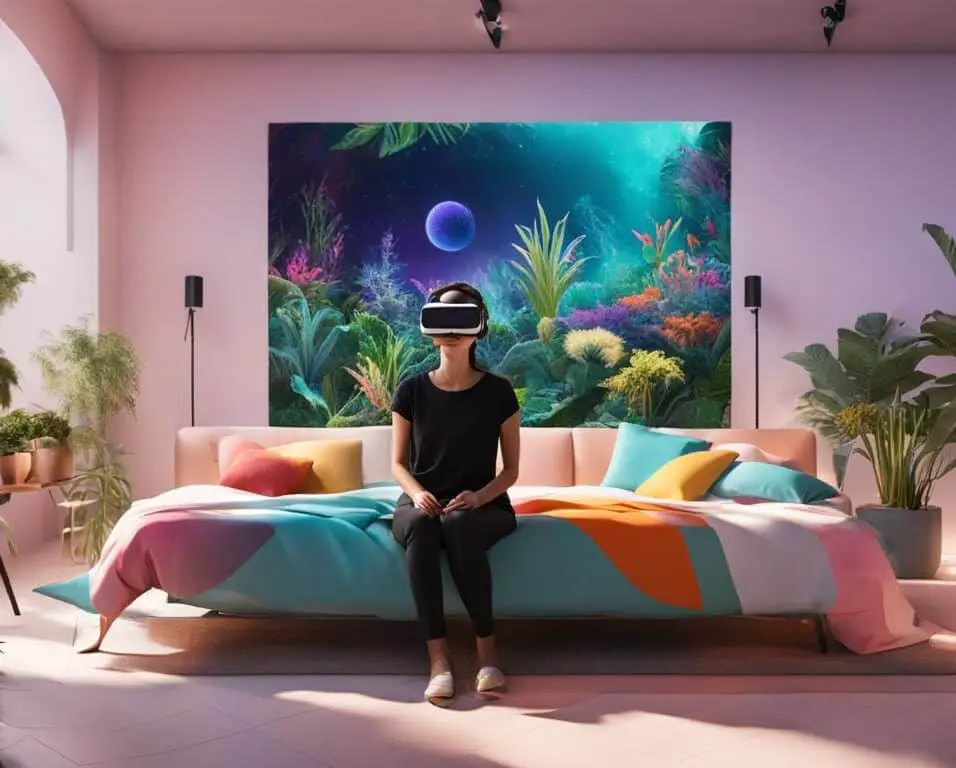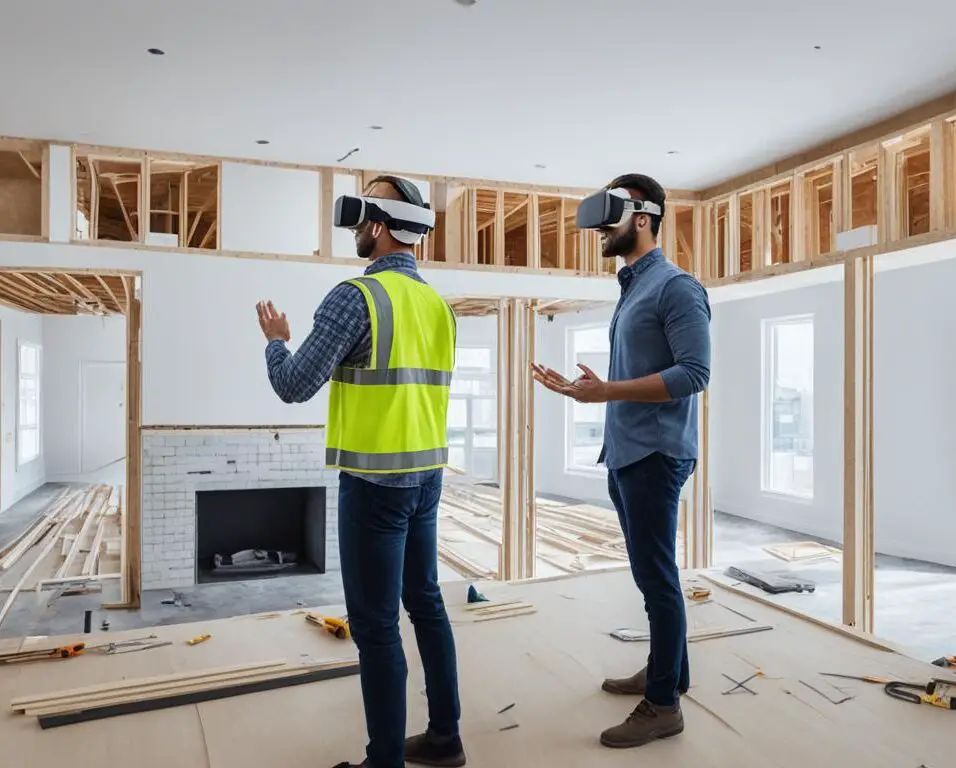Precision in Planning: Efficient Home Design Using VR Models
Efficient home design using VR models is revolutionizing the way space planning is done in the construction industry. With the use of virtual reality technology, architects and designers can create highly detailed and accurate models of homes, allowing for precision in planning and reducing the risk of errors and costly revisions.
Virtual reality (VR) technology has become increasingly popular in various industries, including architecture and design. When it comes to home design, VR allows homeowners and professionals to experience a virtual walkthrough of a space before it is built. This immersive experience provides a realistic representation of how the final design will look and feel, allowing for better decision-making and adjustments before construction begins.
Key Takeaways
- Efficient home design using VR models offers precision in planning and reduces the risk of errors and costly revisions.
- VR technology allows for immersive virtual walkthroughs of homes, providing a realistic representation of the final design.
- Efficient home design using VR models saves time and money by minimizing errors and revisions.
- VR models enable precise placement of furniture, fixtures, and other elements, resulting in a well-designed and functional space.
- Using VR models enhances client communication and collaboration, allowing for better decision-making and design feedback.
The Power of VR in Home Design
Virtual reality (VR) technology is rapidly gaining popularity across various industries, and home design is no exception. The immersive experiences offered by VR have revolutionized the way homeowners and professionals approach the design process. With VR, you can step into a virtual world and explore your future home before construction even begins.
Imagine being able to walk through each room, visualize the layout, and get a sense of how the space flows. VR allows you to do just that. By putting on a headset and grabbing the controllers, you can interact with a photorealistic representation of your future home. This level of engagement goes beyond traditional blueprints or 3D renderings, providing a truly immersive experience that brings your vision to life.
Through VR, you can examine every detail of your home design, from furniture placement to color schemes and lighting choices. This interactive process enables you to make informed decisions and make adjustments to the design before construction begins. It eliminates the risk of surprises and ensures that the final product meets your expectations.
Architects and designers also benefit greatly from VR technology. They can create virtual models of their designs, allowing clients to experience the space and provide valuable feedback. This real-time collaboration enhances communication between designers and clients, ensuring that everyone is on the same page throughout the design process.
VR technology has the power to transform home design, offering a level of immersion and interactivity that was previously unimaginable. It empowers homeowners to make well-informed decisions, architects to bring their designs to life, and designers to communicate their ideas effectively. The possibilities are endless, and the future of VR in home design is bright.
Benefits of Efficient Home Design
Efficient home design using VR models offers numerous benefits. Firstly, it helps minimize errors and revisions, saving both time and money in the construction process. By identifying potential design flaws before construction begins, costly mistakes can be avoided. Additionally, VR models allow for better visualization of the final design, ensuring that the client’s expectations are met and potentially reducing the need for costly changes during the build phase.
With VR technology, architects and designers can create highly detailed and accurate models that provide a realistic representation of the future home. This level of precision in planning not only enhances the overall design quality but also helps optimize various aspects of the construction process.
Efficient home design using VR models offers substantial cost savings and enables more efficient use of resources. By identifying and addressing design issues early on, unnecessary expenses can be eliminated, resulting in a streamlined construction process and reduced material wastage.
In addition to cost savings, efficient home design using VR models also saves time. By allowing architects and designers to visualize the final design before construction begins, potential conflicts or design flaws can be identified and resolved in the virtual environment, saving valuable time that would otherwise be spent on rework or changes during the build phase.
Improved Client Satisfaction
Efficient home design using VR models significantly enhances client satisfaction. With the ability to experience a virtual walkthrough of their future homes, clients can have a clearer understanding of the design concept and make more informed decisions. This level of engagement and involvement in the design process not only ensures that their expectations are met but also strengthens the client-designer relationship.
By incorporating client feedback during the virtual walkthrough, design changes or adjustments can be made early on, reducing the need for costly revisions later in the construction process.
The use of VR models in the design process also allows for better communication and collaboration between the design team and the client. Design choices and modifications can be discussed and visualized in real-time, fostering a more collaborative and efficient decision-making process.
Furthermore, efficient home design using VR models enables the exploration of different design options and material selections. Clients can see firsthand how various elements such as furniture, fixtures, and finishes will look in their space, empowering them to make well-informed choices that best suit their preferences and lifestyle.
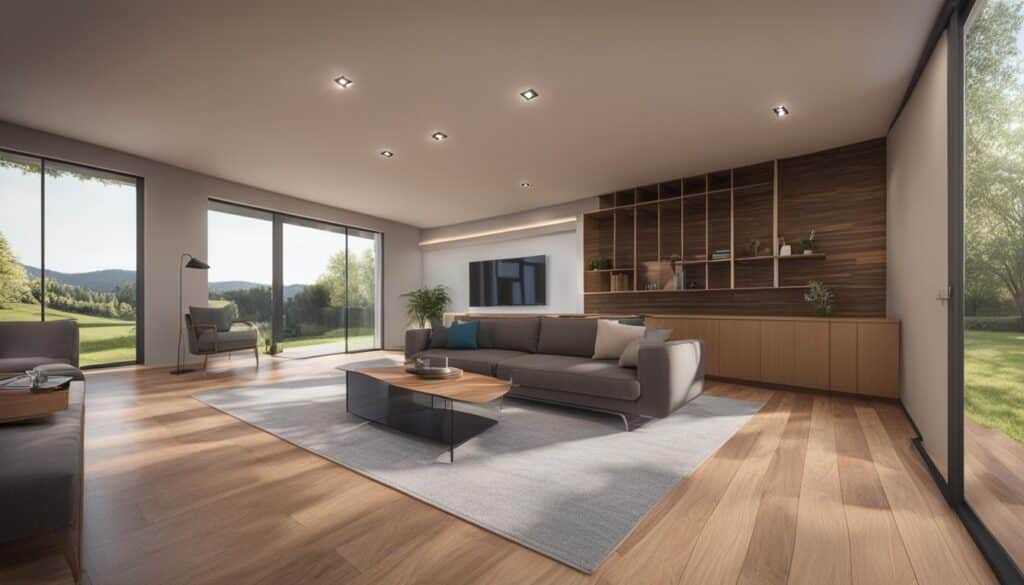
Overall, efficient home design using VR models offers significant benefits in terms of cost savings, time efficiency, and improved client satisfaction. By leveraging the power of virtual reality technology, architects and designers can create precise and visually engaging models that ensure a seamless transition from concept to reality.
Precision in Planning with VR Models
When it comes to efficient home design, precision planning is key. And with the advancements in virtual reality (VR) technology, architects and designers now have the tools to achieve unparalleled accuracy and attention to detail. VR models enable them to create highly accurate measurements and detailed models within a virtual environment, ensuring that every aspect of the design is carefully considered.
Accuracy in measurements is crucial for a well-designed and functional space. With VR models, architects and designers have the ability to precisely place furniture, fixtures, and other elements, optimizing the layout and flow of the home. The level of detail achieved through VR modeling allows for informed decision-making, leading to optimal design outcomes.
“VR models provide designers with the ability to test different design options and materials, enabling them to make informed decisions and create the best possible design.”
One of the greatest advantages of VR models is the ability to test different design options and materials. Virtual reality technology allows architects and designers to experiment with various scenarios, exploring different layouts, finishes, and materials. This virtual testing saves time and resources, as designers can confidently select the most suitable options without the need for costly physical prototypes or iterations.
By utilizing VR models in the planning stage, architects and designers can refine and perfect their designs before construction begins. This not only saves time and money but also reduces the risk of errors and costly revisions during the building process.
A precise and accurately planned design is the foundation for a successful construction project. With VR models, architects and designers can ensure that every detail is meticulously considered, resulting in a well-executed and satisfying final product.
| Benefits | Description |
|---|---|
| Accurate Measurements | VR models allow for precise measurements and placement of furniture, fixtures, and other elements. |
| Optimized Design | The level of detail in VR models facilitates informed decision-making and optimal design outcomes. |
| Cost and Time Savings | By identifying potential design flaws early on, costly revisions and delays can be avoided. |
| Testing Options and Materials | VR models provide the ability to test different design options and materials, leading to more informed design choices. |
Improved Client Communication and Collaboration
Efficient home design using VR models revolutionizes client communication and collaboration, enhancing the overall design process. With the immersive experience provided by virtual reality, clients can go beyond 2D drawings and renderings to truly understand the proposed design concept. This allows for more effective communication between the client and the design team, leading to better outcomes and increased client satisfaction.
“VR models enable clients to step into the virtual environment and experience the design firsthand. This deepens their understanding of the space and enables them to provide more informed feedback and make design decisions with confidence.”
By immersing themselves in the virtual environment, clients gain a realistic representation of the space, enabling them to visualize how it will look and feel. This visual and interactive experience facilitates meaningful and constructive design feedback, allowing adjustments and refinements to be made before construction begins. The ability to iterate and refine the design based on client feedback is crucial for ensuring that the final product meets the client’s vision and expectations.
Collaboration and Design Feedback
Efficient home design using VR models fosters collaboration not only between clients and the design team but also among design professionals. Within the virtual environment, design concepts can be easily shared and discussed, enabling seamless collaboration and idea generation. Designers, architects, and other stakeholders can work together to explore different design options and evaluate the impact of various materials and finishes.
- VR models facilitate real-time design feedback and decision-making.
- Design professionals can easily communicate and exchange ideas within the virtual environment.
- Collaborative design sessions using VR technology lead to faster and more efficient design refinement.
This collaborative approach allows for a deeper understanding of the design intent and encourages innovative ideas to be explored. With improved client communication and collaboration, efficient home design using VR models results in better-designed spaces that meet the needs and preferences of the clients.
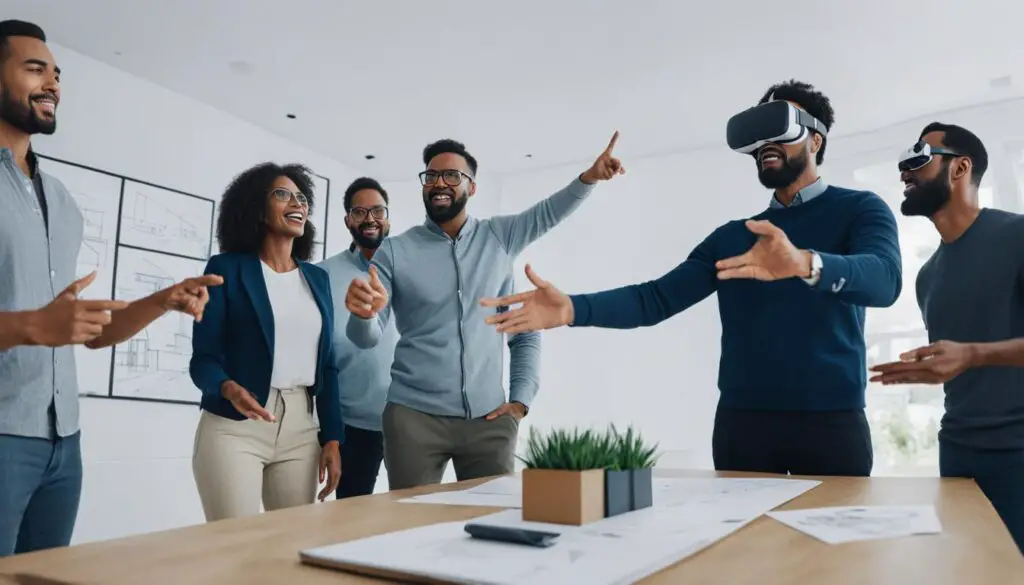
Benefits of Improved Communication and Collaboration
The use of VR models in client communication and collaboration brings a range of benefits to the design process.
| Benefits | Description |
|---|---|
| Enhanced Understanding | VR models enable clients to gain a comprehensive understanding of the design concept, enhancing their ability to provide meaningful feedback and make informed decisions. |
| Reduced Miscommunication | By immersing clients in the virtual environment, the risk of miscommunication is significantly reduced, ensuring that design intent is accurately conveyed and understood. |
| Streamlined Decision-Making | Real-time design feedback and collaboration enable faster decision-making, reducing the overall design iteration and revision process. |
| Increased Client Satisfaction | Improved client communication and collaboration lead to design outcomes that align closely with the client’s vision, resulting in higher levels of satisfaction. |
Future Advances in Efficient Home Design
The future of efficient home design using VR models is filled with exciting possibilities. Ongoing advances in VR technology and design innovations are paving the way for even more efficient and precise planning processes.
As VR hardware becomes increasingly accessible and affordable, its integration into the construction industry is expected to expand significantly. More architects, designers, and homeowners will have the opportunity to tap into the benefits of VR technology for home design.
However, what truly holds the potential to revolutionize efficient home design is the integration of artificial intelligence (AI) and machine learning capabilities into VR models. By combining AI-powered algorithms with VR simulations, designers can optimize their design solutions and streamline the entire process.
AI-Powered Optimization:
With AI and machine learning, VR models can analyze vast amounts of data and generate design options that maximize efficiency, functionality, and aesthetic appeal. These intelligent systems can automatically adapt designs based on user preferences, local regulations, and sustainability requirements, eliminating the need for manual adjustments and saving time.
Real-Time Design Feedback:
Another area where future advances in efficient home design are expected is real-time design feedback. By incorporating AI algorithms, VR models can provide designers with instant feedback on various design aspects, such as material selection, energy efficiency, and structural integrity. This real-time feedback enables designers to make informed decisions and identify potential design flaws early in the process.
The combination of VR, AI, and other emerging technologies holds tremendous potential for the future of home design. These advancements will not only improve the efficiency and precision of the design process but also enhance the overall user experience.
As VR technology continues to evolve and become more sophisticated, the opportunities for innovative design solutions are endless. By embracing these future advances, architects, designers, and homeowners can look forward to creating homes that meet and exceed expectations, taking advantage of the full potential of VR technology and design innovations.
“The integration of AI and VR has transformed the way we approach home design. With real-time design feedback and AI-powered optimization, we can create homes that are not only visually stunning but also highly functional and sustainable.” – Jonathan Davis, Architect
Conclusion
Efficient home design utilizing VR models is revolutionizing the construction industry by providing precision in planning and delivering a multitude of benefits. The integration of virtual reality technology allows architects and designers to create highly detailed and accurate models of homes, reducing the risk of errors and costly revisions. This not only saves time and money but also enhances client communication and collaboration.
By leveraging VR models, architects and designers can offer clients an immersive experience that allows them to visualize and interact with their future home before construction begins. This realistic representation enables better decision-making, resulting in a design that meets and exceeds client expectations. The accuracy of measurements within the virtual environment ensures precise placement of furniture and fixtures, creating well-designed and functional spaces.
Looking ahead, the future of efficient home design using VR models holds great promise. As VR technology continues to advance, it will become more accessible and affordable, leading to wider adoption within the construction industry. Furthermore, the integration of artificial intelligence (AI) and machine learning capabilities into VR models will further streamline the design process and generate optimized solutions. The combination of VR, AI, and other emerging technologies will drive even greater efficiency and precision in home design.
In conclusion, embracing VR models in the design process is a powerful tool for architects, designers, and homeowners. It allows for precision planning, cost and time savings, improved client communication, and collaboration. As the industry evolves, efficient home design using VR models will continue to shape the way homes are planned and designed, ensuring that the final product exceeds expectations and creates spaces that are both functional and aesthetically pleasing.
FAQ
How does efficient home design using VR models revolutionize the construction industry?
Efficient home design using VR models revolutionizes the construction industry by providing highly detailed and accurate virtual models of homes. This precision in planning reduces the risk of errors and costly revisions in the construction process.
What is the benefit of using VR technology in home design?
VR technology allows homeowners and professionals to experience a virtual walkthrough of a space before it is built. This immersive experience provides a realistic representation of the final design, enabling better decision-making and adjustments before construction begins.
How does efficient home design using VR models save time and money?
Efficient home design using VR models helps minimize errors and revisions, resulting in both time and cost savings during the construction process. By identifying potential design flaws before construction begins, costly mistakes can be avoided.
How does VR technology enable precision in planning?
VR models allow for accurate measurements and detailed modeling within the virtual environment. This level of precision ensures that every aspect of the design is carefully considered, resulting in a well-designed and functional space.
How does efficient home design using VR models enhance client communication?
Instead of relying solely on 2D drawings or renderings, clients can immerse themselves in the virtual environment created by VR models. This immersive experience facilitates more effective communication between the client and the design team, as clients can provide feedback and make design decisions based on a realistic representation of the space.
What does the future hold for efficient home design using VR models?
The future of efficient home design using VR models looks promising with constant advancements in VR technology and design innovations. As VR hardware becomes more accessible and affordable, its use in the construction industry is expected to become more widespread. The integration of artificial intelligence (AI) and machine learning capabilities into VR models also holds the potential to further streamline the design process and generate optimized design solutions.
How does efficient home design using VR models transform the way homes are planned and designed?
Efficient home design using VR models allows for precision in planning and brings numerous benefits such as cost and time savings, improved client communication, and collaboration. By embracing VR models in the design process, architects, designers, and homeowners can ensure that the final product meets and exceeds expectations.



